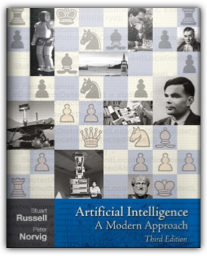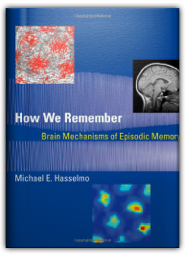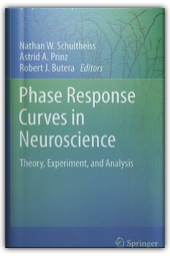
Artificial Intelligence: A Modern Approach, 3e offers the most comprehensive, up-to-date introduction to the theory and practice of artificial intelligence. Number one in its field, this textbook is ideal for one or two-semester, undergraduate or graduate-level courses in Artificial Intelligence. 
Episodic memory proves essential for daily function, allowing us to remember where we parked the car, what time we walked the dog, or what a friend said earlier. In How We Remember, Michael Hasselmo draws on recent developments in neuroscience to present a new model describing the brain mechanisms for encoding and remembering such episodes as spatiotemporal trajectories. He reviews physiological breakthroughs on the regions implicated in episodic memory, including the discovery of grid cells, the cellular mechanisms of persistent spiking and resonant frequency, and the topographic coding of space and time. These discoveries inspire a theory for understanding the encoding and retrieval of episodic memory not just as discrete snapshots but as a dynamic replay of spatiotemporal trajectories, allowing us to "retrace our steps" to recover a memory. On the behavioral level, Hasselmo emphasizes the capacity to encode and retrieve spatiotemporal trajectories from personal experience, including the time and location of individual events. On the biological level, he focuses on the dynamical properties of neurons and networks in the brain regions mediating episodic memory, addressing the role of neural oscillations and the effect of drugs on episodic memory. In the main text of the book, he presents the model in narrative form, accessible to scholars and advanced undergraduates in many fields. In the appendix, he presents the material in a more quantitative style, providing mathematical descriptions appropriate for advanced undergraduates and graduate students in neuroscience or engineering. 
This book will track advances in the application of phase response (PR) analysis to the study of electrically excitable cells, focusing on applications of PR analysis in the computational neurosciences. This proposal was motivated by discussions with colleagues at the 2007 meeting of the Organization for Computational Neuroscience (OCNS) and further motivated by the success of a workshop at the 2008 OCNS meeting this past July. At that meeting the editors hosted a workshop entitled A dialogue for theoreticians and experimentalists: What is phase response analysis, and what can it tell us about neurons and networks? Invited speakers used mathematical, modeling, and experimental results to illustrate how phase response analysis has been used to reveal or describe neuronal and neuronal population dynamics. This was the most well-attended workshop of the meeting and was standing room only. |

Máté Lengyel
Collection Total:
201 Items
201 Items
Last Updated:
May 28, 2012
May 28, 2012

 Made with Delicious Library
Made with Delicious Library